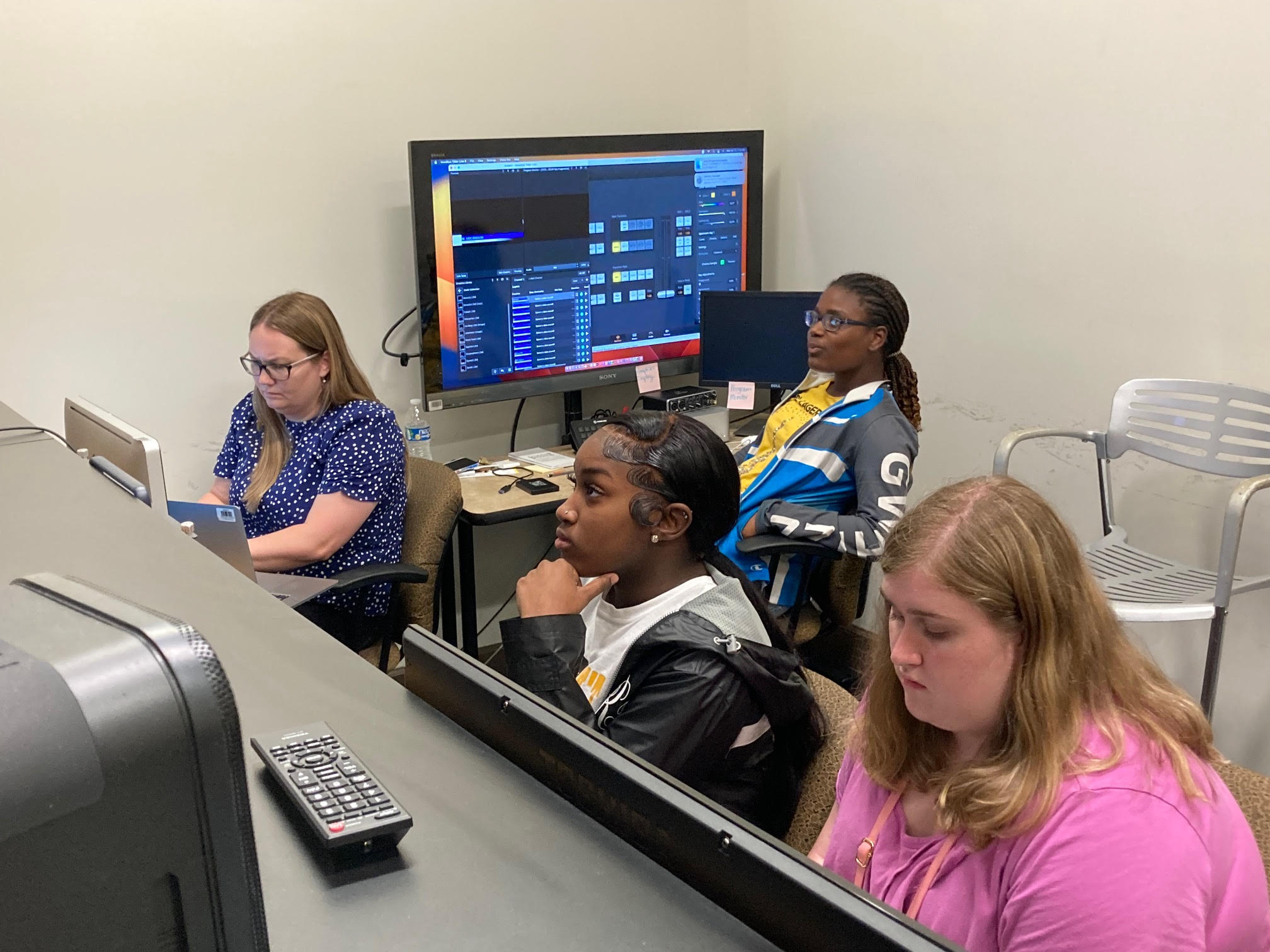
Dr. Lindsey Maxwell (far left), an associate professor of broadcast news, works with students in the television control room at the University of Southern Mississippi.
By Dominic Minadeo
Starting next fall, The University of Southern Mississippi will roll out an expansive community journalism project to supply a major news desert with people-centric stories.
The project, named the Roy Howard Community Journalism Center, will provide opportunities for students at high schools, community colleges and the university, itself, to serve an undercovered 10-county region in southeastern Mississippi, according to the university's grant submission to the Scripps Howard Fund.
“I think what the impact of this program will be is that local, everyday Mississippians are going to see more of themselves and their own experiences reflected in the news,” said Mary Margaret White, CEO of Mississippi Today, a Pulitzer Prize-winning newspaper and partner of the program.
High school students will conduct research, interviews and potentially write first drafts of stories. Community college students will serve as entry-level interns; university students will produce stories; and graduate students will provide research and teaching assistance, according to the proposal.
The program’s launch comes with the help of a $3 million dollar grant awarded by the Scripps Howard Fund, according to an April 30 press release. The University of Southern Mississippi will receive $1 million annually for three years to set the program in motion.
“It's going to help people have the information and the resources they need to ask good questions of their local leaders, to get involved with community groups and to really stand up for themselves in their communities,” White said.
An ‘intense news desert’
The school of communication at The University of Southern Mississippi has more than 240 majors in media and journalism and 17 full-time faculty members. The coverage area for the news center hosts roughly 675,000 residents and tends to “be poorer, less well-educated, and more diverse than the rest of the nation,” according to the proposal.
The competitive grant, awarded by the Scripps Howard Fund, will give the university the resources to establish their program. The center will partner with five major media outlets throughout Mississippi to produce new content.
The four other partners named in the proposal include radio, broadcast and press associations across the state, giving emerging journalists the chance to contribute a range of content for different media.
A media ecology study conducted by researchers for the proposal named the region an “intense news desert” and said news was “sparse and frequently without depth or context.” The Roy Howard Community Journalism Center aims to increase civic and community involvement — because, as White said, more journalism means more engagement.
“We will be able to bring resources — both intellectual and physical — to a region that really hasn't had them available to them in any kind of scale up to now,” said Edgar Simpson, a program coordinator and director of the university’s school of communication. “Because southeast Mississippi, as experienced with almost every other part of the country, has a dwindling and declining channel for professional journalism.”
When conducting a strengths, weaknesses, opportunities and threats analysis, researchers found the center faces a series of challenges: political polarization and the “ruby red” area they aim to cover. Simpson attributed the polarization problem to social media, which can feed people one-sided news that effectively puts them in what he referred to as a “news information silo.”
“The threat in trying to do something like this is that folks will dismiss it because it doesn’t fall into their silo,” Simpson said. “We have to educate our way out of those silos.”
A hotline for truth
The center will also serve southeast Mississippi with a “What is True?” department, which serves as an information monitoring system designed to respond to community inquiries and correct “out-of-context information,” according to the proposal. The system will include a hotline, podcast, web feature and community events to promote information literacy.
“If you're out there and you see something, you can call up the Roy Howard Community Journalism Center and say, ‘Well is this true? Did this really happen?’” Simpson said.
From there, a team of graduate students and media literacy professionals would track down the information and provide context, he said.
The idea may be the first of its kind.
“We were not able to find a model anywhere else in the country for something like this, but we thought it was needed,” he said.
White said the hotline idea was new to her, but she praised its innovation and predicted it will further engage journalists and the public alike.
“Hopefully, it will become a model that other newsrooms and communities can utilize to help fight misinformation and disinformation,” she said.
